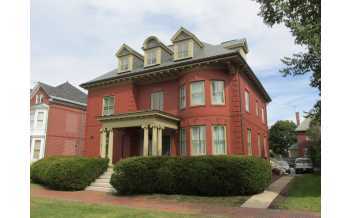Leighton House, is the quirky former home cum studio of the painter and socialite, Lord Leighton; one of the most famous Victorian painters. George Aitchison, the architect, built it over almost 30 years, starting in 1865 and ending when Lord Leighton died in 1895. It’s among a handful of small museums in London which offer that fascinating insight of the home of an artist as well as his art collection.
From the outside the house resembles an Italian Palazzo. The interior is no less astonishing: the house is built around a two storey Arab type atrium decorated with more than a 1,000 brightly glazed tiles bought by Leighton on his trips to the Middle East. In the middle of the hall is a fountain where Leighton and his guests were accustomed to retiring after dinner to enjoy post-dinner drinks and cigars. The fountain is topped by a gold-painted dome and surrounded by columns carved with birds. The furniture throughout the house is a mix of arts and crafts and Oriental furniture.
On the first floor is Leighton’s studio/theatre. Note the huge space with monumentally high ceilings, with a stage at one end and a minstrel’s gallery at the other. It was here that Leighton installed a band for parties or worked on enormous canvases. Don’t miss the wonderful view over the garden.
Opposite is the Silk Room where you can admire examples of work by Leighton's fellow artists such as Millais, Burne-Jones, Watts and Sargent, Albert Moore and Lawrence Alma-Tadema, which show the technique they used. About 80 of Leighton's own paintings, as well as his small-scale sculptures and personal ephemera, are on display throughout the house.
Frederic Leighton (1830-1896), came from a well-off family and never had to worry about finances. He often went off on trips to Europe and the Middle East and was used to socialising with the who’s who of London. In 1855 Queen Victoria bought his first major painting and just over 20 years later, in 1878, he was crowned President of the Royal Academy of Arts.
Activities
-
Leighton House Museum, London
Leighton House Museum is the quirky former home-cum-studio of the painter and...






